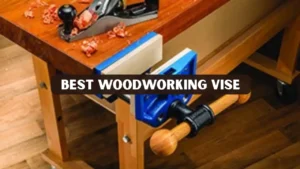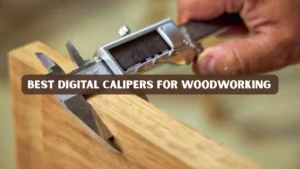Woodworking has always been a craft that blends creativity with precision, allowing people to transform raw wood into beautiful furniture, decorative pieces, and functional items. Whether you are just beginning your woodworking journey or have been experimenting for a while, choosing the best woodworking tools is the key to improving your skills and producing quality projects. Having the right set of tools ensures not only accuracy and safety but also helps make the learning process more enjoyable.
In this comprehensive guide, we will explore a mix of hand tools, power tools, and essential workshop accessories that every woodworker should consider, along with practical insights and real-world examples that highlight how these tools are used effectively.
What to Look for When Choosing Tools
Selecting woodworking tools is not only about going after popular brands but about understanding how each tool fits into your workshop and overall workflow. Beginners often feel overwhelmed by the wide range of options, but narrowing the focus to durability, ergonomics, and functionality makes the decision easier. A tool that feels comfortable in the hand, is built from strong materials, and offers reliable precision will likely remain useful for many years.
Another important factor is safety, since woodworking often involves sharp edges and high-powered machinery. Tools with built-in protective features, such as blade guards or automatic shut-offs, greatly reduce the risk of accidents. For instance, a circular saw equipped with a blade guard provides a much safer cutting experience for beginners compared to one with an exposed blade. Balancing quality with affordability is equally essential, and many woodworkers find it practical to start with basic but dependable tools and gradually upgrade as their skills and projects expand.
Best Woodworking Tools for Your Workshop
When beginning woodworking, one common question is which tools are worth investing in first. While the choice depends on the type of projects, certain essentials are found in nearly every workshop. These tools help with cutting, shaping, and finishing wood accurately while building a foundation for future upgrades. In this guide, we’ll cover the best woodworking tools every beginner should consider.
Measuring and Marking Tools
Accuracy in woodworking begins long before cutting any wood. Essential measuring and marking tools like a tape measure, try square, and marking gauge form the foundation for precise work. A tape measure keeps dimensions consistent, a try square ensures perfect ninety-degree corners, and a marking gauge helps draw parallel lines for joinery. Without these tools, even skilled use of saws or chisels can result in errors, such as uneven or wobbly shelves, highlighting their importance for both beginners and experienced woodworkers.
Chisels for Shaping Wood
Wood chisels are essential for shaping joints, carving designs, and refining edges in woodworking projects. High-quality chisels with hardened steel blades and comfortable wooden handles allow for both precise and forceful work. Used with a wooden mallet, they can create mortise and tenon joints or add decorative details. Beginners often start with a set of three or four common sizes, which cover most tasks, and over time, these chisels become an extension of the woodworker’s hand, enabling fine adjustments machines cannot replicate.
The Hand Plane
The hand plane is a traditional but powerful tool valued by every woodworker who uses it. It smooths and flattens surfaces, often replacing sandpaper to leave wood silky and even. It is also useful for trimming small amounts of wood when fitting joints or adjusting doors. Beginners quickly see the benefit, as it teaches patience, control, and how to read the wood grain, proving why some classic tools remain relevant despite modern power alternatives.
Handsaws
Before power tools became widespread, handsaws were the foundation of woodworking, and they remain essential in many workshops today. A crosscut saw excels at cutting across the grain, while a rip saw is better suited for cutting along the grain. Smaller saws, such as dovetail and tenon saws, are crucial for precise joinery and detailed work. Having at least two types of handsaws allows woodworkers to tackle a variety of tasks, from crafting accurate drawer joints with a dovetail saw to making quick cuts in softwood with a crosscut saw.
Clamps and Mallets
Clamps may not seem exciting, but no project comes together properly without them. They hold pieces firmly in place during gluing, cutting, or assembly, ensuring that joints remain tight and accurate. A good mallet, often made of wood or rubber, complements chisels by providing controlled force without damaging the tool’s handle. Together, clamps and mallets represent stability and precision, acting as silent partners in nearly every woodworking task.
Circular Saw
The circular saw is one of the most versatile and widely used power tools, ideal for quick, straight cuts in plywood, boards, and sheet materials. Its portability and efficiency make it a popular choice for beginners as their first power saw. With the appropriate blade, it can cut various woods, including hardwoods and composites. For example, cutting panels for a cabinet requires precise, consistent cuts to ensure all pieces fit together accurately.
Table Saw
The table saw is often called the heart of the workshop because of its precision and versatility. Unlike portable circular saws, it offers a stable surface for ripping, crosscutting, and even joinery with jigs. Beginners usually start with contractor-style saws for affordability, while professionals prefer cabinet saws for accuracy and durability. Its ability to reduce errors and speed up production makes it one of the best woodworking tools for every level.
Band Saw
The band saw is another essential tool that expands creative possibilities in woodworking. Its narrow blade allows for curved cuts, detailed shapes, and even resawing thick boards into thinner pieces. Unlike the jigsaw, which is handheld, the band saw provides greater stability and accuracy, making it ideal for cutting bowl blanks for the lathe or preparing intricate furniture components. For example, a band saw can cut a smooth curve in a chair leg that would be nearly impossible to achieve with a circular saw.
Power Drill
The power drill is a versatile tool that goes beyond simply making holes. Equipped with drill bits and screwdriver attachments, it can assemble furniture, create pilot holes, and even sand with the right accessories. Cordless drills are especially convenient for portability, allowing work anywhere in the workshop or on-site. Investing in a model with variable speed and strong torque ensures efficient, precise, and long-lasting performance.
Random Orbital Sander
Finishing is just as crucial as cutting, and the random orbital sander is ideal for achieving smooth, even surfaces quickly. Its orbital motion minimizes visible sanding marks, leaving wood polished and ready for finishing. This tool is perfect for preparing surfaces for paint, stain, or clear coats, saving hours of manual work. For instance, sanding a tabletop with an orbital sander ensures uniform smoothness and professional-quality results, even for beginners.
Jigsaw
The jigsaw stands out for its ability to cut curves and intricate patterns that straight saws cannot achieve. It is commonly used in decorative woodworking, such as creating custom shapes for shelves or cutouts in furniture. With the right blade, it can cut through hardwood, plywood, or even laminated materials. Beginners often appreciate its lightweight design and versatility, making it an excellent addition to any starter toolkit.
Router
A router is one of the most versatile power tools in woodworking, capable of shaping edges, cutting grooves, and creating joints. With a wide variety of bits, it can transform plain boards into decorative panels with elegant profiles. Routers are also essential for tasks such as creating dadoes or mortises, which are fundamental in furniture making. The difference between a plain table edge and a routed edge with a decorative pattern demonstrates the transformative power of this tool.
Drill Press
A drill press is a stationary tool designed for drilling consistent, perfectly vertical holes. Unlike a handheld drill, it offers stability, depth control, and the ability to handle tougher materials without strain. This makes it ideal for tasks such as creating mortises, evenly spaced holes for shelving, or precise dowel joints. In many workshops, the drill press becomes the go-to tool for repetitive drilling tasks, ensuring uniform results that handheld drills may struggle to achieve.
Combination Square
The combination square is a simple yet highly effective measuring tool that deserves a place in every woodworker’s toolkit. It functions as a ruler, a 90-degree square, and a 45-degree miter square all in one, making it extremely versatile. Woodworkers use it to check angles, mark accurate cut lines, and verify depth on grooves or mortises. A reliable combination square can quickly prevent mistakes that would otherwise ruin hours of effort.
Spokeshave
A spokeshave is a traditional shaping tool that excels at smoothing curves and refining contours. It is often used in chair making, bow crafting, or any project requiring rounded edges and flowing lines. Unlike planes that work best on flat surfaces, the spokeshave allows for fine adjustments on curved wood, giving projects a polished and handcrafted feel. Many experienced woodworkers still reach for this tool when working on custom designs, as it provides tactile feedback and control that machines cannot replicate.
Belt Sander
The belt sander is one of the most powerful sanding tools available, capable of removing material quickly and leveling rough surfaces. It is especially useful when working with reclaimed wood or when you need to flatten uneven boards before moving to finer sanding stages. While it requires a steady hand to avoid gouging the wood, the belt sander saves significant time compared to manual methods.
The Wood Lathe
For woodturning enthusiasts, the lathe serves as the centerpiece of the workshop, enabling the precise shaping of cylindrical items like bowls, pens, and table legs. It blends functionality with artistry, offering endless creative possibilities for hobbyists and professionals alike. While beginners may face a learning curve, the rewards are worth the effort, as lathe work produces results that few tools can match. Many artisans even turn basic wood blocks into elegant bowls sold at craft fairs, proving the lathe’s potential in both craftsmanship and creativity.
Lathe Chisels and Gouges
A wood lathe is only complete when paired with chisels and gouges, which come in shapes like spindle gouges, bowl gouges, and skew chisels. Each serves a specific purpose, from hollowing bowls to creating smooth finishes, making them indispensable for turning projects. Mastering their control on spinning wood takes practice, but the polished results are rewarding. Beginners should start with a small, high-quality set to focus on the basics before expanding their collection.
Workshop Essentials
Beyond individual tools, a functional workshop requires supporting elements such as a sturdy workbench, a reliable vise, and proper lighting. A dust collection system is also crucial for both safety and cleanliness since wood dust can harm health and affect the finish of projects. Protective gear including safety glasses, gloves, and ear protection ensures safe practices while working with both hand and power woodworking tools. Incorporating the best woodworking tools into a well-organized workshop improves efficiency, allowing woodworkers to focus on creativity rather than dealing with clutter or unsafe conditions.
Case Study A Beginner’s Toolkit in Action
Consider the example of a hobbyist who began woodworking with just a circular saw, power drill, and a few hand tools. Over time, they added a router, clamps, and eventually a wood lathe with chisels. Each addition expanded the range of projects they could complete, from simple shelves to decorative turned bowls. This gradual investment approach illustrates that building a toolkit is a journey, not a one-time purchase. By prioritizing quality over quantity and learning each tool’s strengths, the woodworker gained confidence and produced projects worth showcasing.
Conclusion
Choosing the best woodworking tools is about finding the right balance between your projects and skill level, not just filling a workshop. Hand tools like chisels and planes provide precision, while power tools such as routers and sanders deliver efficiency and consistency. Each tool has a role in shaping wood, making it vital to understand how they fit into your workflow. For turning projects, lathe tools add creativity, and starting with essentials before expanding ensures woodworking stays enjoyable and rewarding.
FAQs
What are the most important woodworking tools for beginners?
Beginners should start with a tape measure, try square, handsaw, power drill, and clamps. These tools cover the basics of measuring, cutting, drilling, and assembly.
Do I need both hand tools and power tools?
Yes, both are valuable. Hand tools offer precision and a deeper connection to the craft, while power tools save time and effort on larger projects.
What’s the first lathe tool I should buy?
A beginner woodturner should invest in a spindle gouge or a small set of chisels designed for basic turning. These tools cover most entry-level projects.
Are expensive woodworking tools worth it?
While not always necessary, high-quality tools last longer, perform better, and can improve safety. Investing in good tools gradually is often the smarter strategy.




